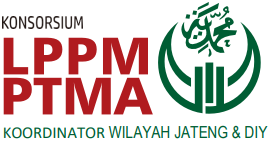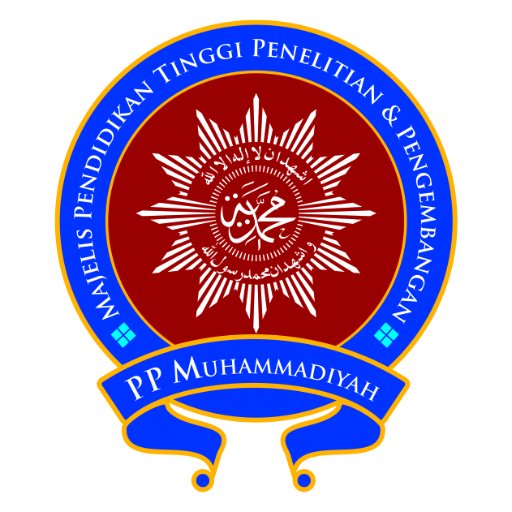Effects of Core Stability Exercise and Neurosensorimotor Reflex Integration on the Crawling Ability of Children with Quadriplegi Spastic Cerebral Palsy: Case Report
DOI:
https://doi.org/10.53017/ujas.175Keywords:
Core stability exercise, Neurosensorimotor reflex integration, Cerebral palsy, Crawling, ChildrenAbstract
In children with cerebral palsy, core stability exercise is an important aspect that must be done as a basis and preparation for crawling. In addition, neurosensorimotor reflex integration is given to help control emotions so that children can cooperate when given exercise. These two methods are given because they can support the motor, sensory, and cognitive aspects of children. It is hoped that research outcomes can be achieved. To determine the effect of core stability exercise and neurosensorimotor reflex integration on the crawling ability on children with spastic quadriplegia cerebral palsy. Single subject research conducted on a 20-month-old spastic quadriplegious cerebral palsy child. Subjects were given core stability exercise and neurosensorimotor reflex integration for 4 weeks, therapy was carried out twice a week and follow-up measurements were made on children's motor development for 1 month. Evaluation of children's motoric measurement, using the GMFCS (Gross Motor Function Classification System) instrument. The baseline found that there was no significant development in the child's ability to crawl. However, at the second follow-up, the child was able to perform crawling movements even though the pattern was less than perfect. Creep becomes the basis for crawling. There was no significant improvement in children's motoric development, namely crawling after being given core stability exercise and neurosensorimotor reflex integration for one month.
Downloads
References
I. Khan; and B. L. Leventhal., Developmental Delay. 2021.
D. Miclea, L. Peca, Z. Cuzmici, and I. V. Pop, “Genetic testing in patients with global developmental delay / intellectual disabilities. A review,” Clujul Medical, vol. 88, no. 3, pp. 288–292, 2015, doi: 10.15386/cjmed-461.
D. R. Patel, M. Neelakantan, K. Pandher, and J. Merrick, “Cerebral palsy in children: A clinical overview,” Translational Pediatrics, vol. 9, no. 1, pp. S125–S135, 2020, doi: 10.21037/tp.2020.01.01.
National Center on Birth Defects, “Data and Statistics for Cerebral Palsy,” Center For Disease control prevention, 2020. .
A. F. Naufal, Mengenal dan Memahami Fisioterapi Anak. 2019.
E. Dias, “Cerebral Palsy: A Brief Review,” Acad J Ped Neonatol, vol. 4, no. 1, pp. 1–3, 2017, doi: 10.19080/AJPN.2017.03.555687.
M. M. Visser and D. Franzsen, “The association of an omitted crawling milestone with pencil grasp and control in five- and six-year-old children,” South African Journal of Occupational Therapy, vol. 40, no. 2, pp. 19–23, 2010.
A. Clarke, “Movement Milestone – CRAWLING,” Cognikids, 2021. .
J. S. Tecklin, Pediatric Physical Therapy. 2015.
J. S. Hong, Cerebral Palsy: PAC-Centered Strategies, vol. 7, no. 9. 2015.
J. W. Shin, G. Bin Song, and J. Ko, “The effects of neck and trunk stabilization exercises on cerebral palsy children’s static and dynamic trunk balance: Case series,” Journal of Physical Therapy Science, vol. 29, no. 4, pp. 771–774, 2017, doi: 10.1589/jpts.29.771.
S. Urvikyt? and V. Dudonien?, “Relationship between Crawling Function in Infancy and Motor Skills, Cognitive Functions in 4 to 6-Year-Old Children,” Reabilitacijos Mokslai: Slauga, Kineziterapija, Ergoterapija, vol. 1, no. 24, 2021, doi: https://doi.org/10.33607/rmske.v1i24.1080.
S. Masgutova, P. D. Russia-poland, E. S. Wenberg, and M. Retschler, “Masgutova Method of Reflex Integration for Children With Cerebral Palsy,” pp. 1–23, 2008.
D. Tajik-Parvinchi, L. Farmus, P. Tablon Modica, R. A. Cribbie, and J. A. Weiss, “The role of cognitive control and emotion regulation in predicting mental health problems in children with neurodevelopmental disorders,” Child: Care, Health and Development, vol. 47, no. 5, pp. 608–617, 2021, doi: 10.1111/cch.12868.
R. Wati, “Penatalaksanaan Fisioterapi Pada Kondisi Attention Deficit Hyperactivity Disorder (Adhd) Dengan Metode Neuro Senso Motor Reflex Development Dan Play Therapydi Ypac Surakarta,” Jurnal PENA, vol. 8, no. 5, p. 55, 2019.
K. Stewart, “MNRI for Children with Cerebral Palsy,” Svetlana Masgutova Educational Institute, 2015.
R. Palisano et al., “Gross Motor Function Classification System Expanded and Revised,” Reference: Dev Med Child Neurol, vol. 39, pp. 214–223, 2007, doi: https://doi.org/10.1111/j.1469-8749.2.
Diane L. Damiano, “Rehabilitative Therapies in Cerebral Palsy: The Good, the Not As Good, and the Possible,” Journal Children Neurology, vol. 24, no. 9, pp. 1200–1204, 2009, doi: 10.1177/0883073809337919.Rehabilitative.
H. M. Abd-Elfattah and S. M. Aly, “Effect of Core Stability Exercises on Hand Functions in Children With Hemiplegic Cerebral Palsy,” Journal of Pediatrics & Neonatal Care, vol. 45, no. 1, pp. 71–78, 2014, doi: 10.5535/arm.20124.
G. Ar? and M. Kerem Günel, “A Randomised Controlled Study to Investigate Effects of Bobath Based Trunk Control Training on Motor Function of Children with Spastic Bilateral Cerebral Palsy,” International Journal of Clinical Medicine, vol. 08, no. 04, pp. 205–215, 2017, doi: 10.4236/ijcm.2017.84020.
F. H. A. El Azeim, “The Problem Solving Strategy of Poor Core Stability in Children with Cerebral Palsy: A Clinical Trial,” Journal of Pediatrics & Neonatal Care, vol. 6, no. 1, 2014, doi: 10.15406/jpnc.2014.01.00037.
L. J. B. Hill, R. O. Coats, F. Mushtaq, J. H. G. Williams, S. Aucott, and M. Mon-williams, “Moving to Capture Children ’ s Attention?: Developing a Methodology for Measuring Visuomotor Attention,” plose one, vol. 11, no. 7, pp. 1–36, 2016, doi: 10.1371/journal.pone.0159543.
H. B. Harris, K. S. Cortina, T. Templin, N. Colabianchi, and W. Chen, “Impact of Coordinated-Bilateral Physical Activities on Attention and Concentration in School-Aged Children,” BioMed Research International, 2018, doi: https://doi.org/10.1155/2018/2539748.
N. Takarini, Konsep Pendekatan Nsmri. 2015.
Firmansyah, “KONSEP PENDEKATAN NEURO-SENSO-MOTOR REFLEX INTEGRATION (NSMRI),” Body In Movement, 2016. .
G. S. Ganesh and S. P. Das, “Evidence-based Approach to Physical Therapy in Cerebral Palsy,” Indian Journal of Orthopaedics, vol. 53, pp. 20–34, 2019, doi: 10.4103/ortho.IJOrtho_241_17.
C. Huang et al., “Efficacy and safety of core stability training on gait of children with cerebral palsy: A protocol for a systematic review and meta-analysis,” Medicine (United States), vol. 99, no. 2, pp. 1–5, 2020, doi: 10.1097/MD.0000000000018609.
S. Levit, Treatment of Cerebral Palsy and Motor Delay. Blackwell Publishing, 2004.
F. Miller et al., Physical therapy of cerebral palsy. Springer Healthcare, 2007.
Downloads
Published
How to Cite
Issue
Section
License
Copyright (c) 2022 Selma Safiannisa Haqia, Wahyu Tri Sudaryanto, Intan Herlinawati, Farid Rahman

This work is licensed under a Creative Commons Attribution-NonCommercial 4.0 International License.





